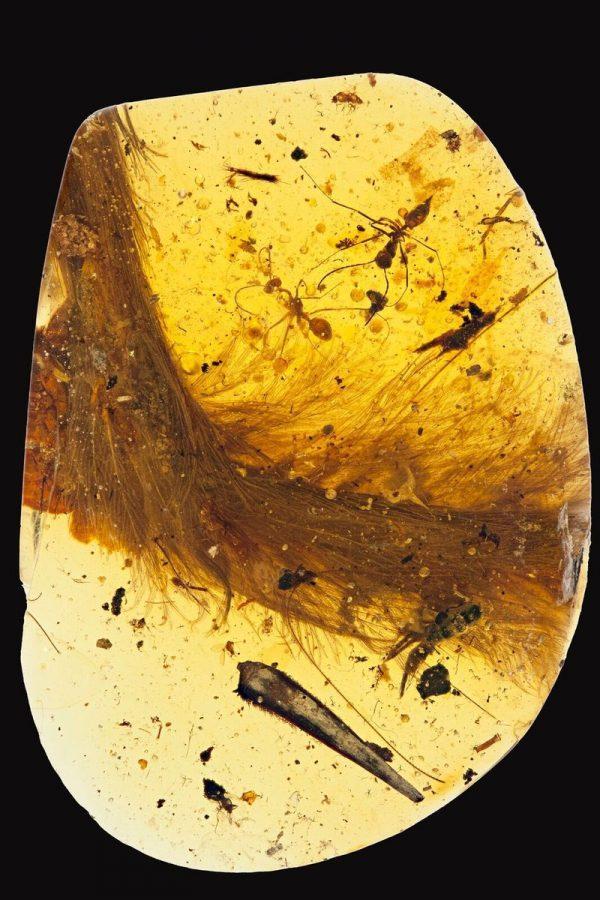Encased in Amber: Feathered Dinosaur
March 14, 2017
In a scene straight out of Jurassic Park, researchers have excavated a fossil that will launch the scientific community into a frenzy over the age of dinosaurs. The tail of a dinosaur has been found, trapped in a 3.6 cm piece of amber. The bones, soft tissue, and feathers were perfectly preserved for what seems like 99 million years.
While there have been numerous fossils unearthed in the past that pointed to the existence of feathered creatures, few of them compare to the significance this one holds. It is the first time scientists are able to associate well-preserved feathers with dinosaurs, and sequentially putting in motion the race to gain a better understanding of evolution.
How exactly did researchers locate the origin of the tail? Actually, it was more like coming across this discovery than actually unearthing it from the ground. The amber in which the fossil is preserved was found in none other than a market in Myitkyina, Burma. It had been offered for sale as a type of jewelry. The fossil within it was mistaken for plant material.
When people think of feathers, they typically associate it with flight. However, it is not this case with this appendage. After multiple examinations, the scans confirmed the presence of articulated tail vertebrae, ruling out the possibility that the feathers belonged to a prehistoric bird. Instead, research has proven that it came from a flightless dinosaur.
Chemical analysis showed traces of ferrous iron, which is a decomposition product from the blood hemoglobin, found on the soft tissue. It was confirmed that the dinosaur was part of the large theropod family, the same one as many of the large carnivorous creatures such as the T. rex.
Scientists have been speculating the story behind this tail encased in amber. Some believe that since dinosaurs cannot shed their tails like the modern-day lizards, the “little fellow” who was unlucky enough to get his tail stuck in the resin presumably died because he could not wrestle free.
Fossils such as this allow scientists to paint a picture of life millions of years ago. What major discovery is next in store for the scientific community?



